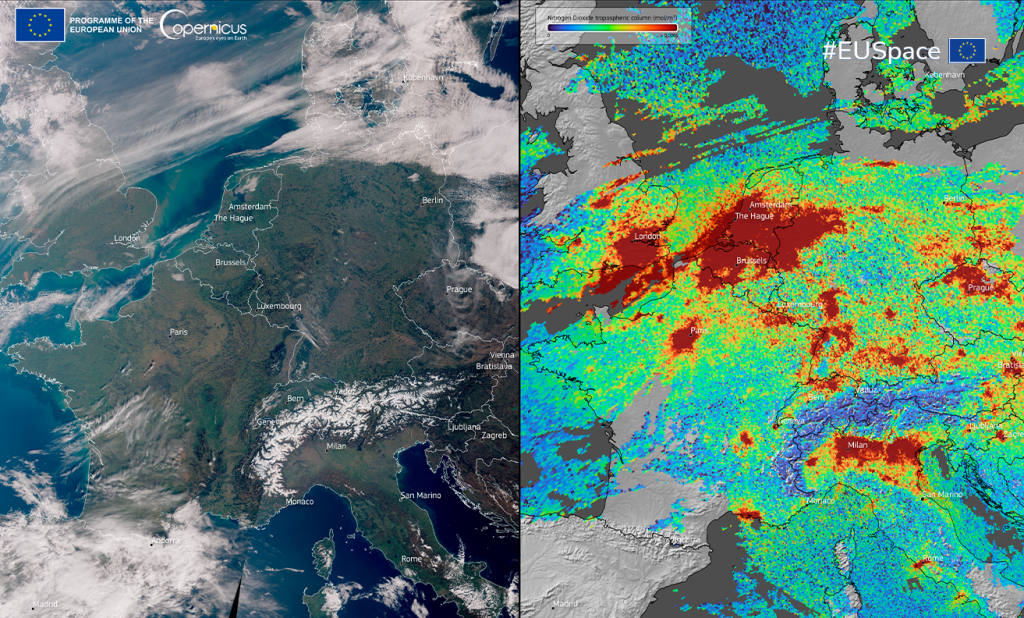Climate-proofing healthcare insurance with Copernicus data

The healthcare insurance industry is entering a new era, driven by shifting health risks, rising costs, and a growing demand for personalised, tech-enabled solutions. Climate change is not a distant threat in this landscape, but a force already reshaping how insurers approach risk, prevention, and resilience. Against this backdrop, Earth Observation data, particularly from the EU’s Copernicus programme, is emerging as a vital strategic asset.
Climate-related hazards like heatwaves and air pollution are intensifying and contributing to a rise in respiratory and cardiovascular conditions. Vector-borne diseases are appearing in new regions, complicating traditional risk models. At the same time, customers expect more tailored coverage and digital experiences, while insurers must also keep an eye on costs, optimise operations, and differentiate their services in a crowded market.
Copernicus stands out as a source of global environmental data, free of charge and openly accessible. Services like the Copernicus Atmosphere Monitoring Service (CAMS) and the Copernicus Climate Change Service (C3S) offer detailed, up-to-date information on air quality, temperature, humidity, and other indicators that directly affect human health. For health insurers, this data offers an opportunity to reimagine how risks are assessed, premiums calculated, and preventive measures deployed.
Copernicus use cases
One emerging Copernicus application is risk prediction. Many insurers are shifting to proactive models that prioritise long-term cost reduction through early intervention. Environmental stressors linked to climate change, such as pollution spikes or extreme heat, or changing disease patterns, are closely tied to hospital admissions and chronic health problems. With Copernicus data, insurers can model these risks with unprecedented precision, forecast demand for healthcare services in vulnerable regions, and allocate resources more effectively.
Another promising application lies in the development of personalised premiums. Traditional insurance pricing relies on broad demographic averages and historical claims, but insurers now explore more tailored products for individual environmental exposure. Copernicus offers a window into a person’s long-term exposure to pollutants or heat extremes, which could allow for more precise assessments. The result: pricing that more accurately reflects actual risk, benefiting both insurer and customer.
Environmental data is also useful in patient triage and telemedicine. With emergency rooms under strain and healthcare costs climbing, digital tools like symptom checkers and virtual consultations are gaining traction. Copernicus data, such as pollution levels or temperature extremes, could provide context to tools, helping prioritise care for sensitive individuals or guiding patients towards the right care pathway. This could improve outcomes and boost system efficiency. Copernicus offers more than environmental data. It enables a smarter and more adaptive healthcare insurance ecosystem. From modelling future risks to supporting personalised and preventive care, Earth Observation data is an enabler of both innovation and resilience. As the climate continues to change, insurers who harness this data will be better positioned to anticipate risks, meet customer expectations, and lead in a changing market.
Got interested in the use cases? Would you like to explore how Copernicus could benefit your organisation? EUSPA can support healthcare insurers through initiatives such as the Copernicus Healthcare Demonstrators, helping them recognise their specific needs, identify matching Copernicus-based solutions, and implement pilot projects. Health insurers interested in exploring these opportunities are encouraged to contact EUSPA at market@euspa.europa.eu.
Media note: This feature can be republished without charge provided the European Union Agency for the Space Programme (EUSPA) is acknowledged as the source at the top or the bottom of the story. You must request permission before you use any of the photographs on the site. If you republish, we would be grateful if you could link back to the EUSPA website.